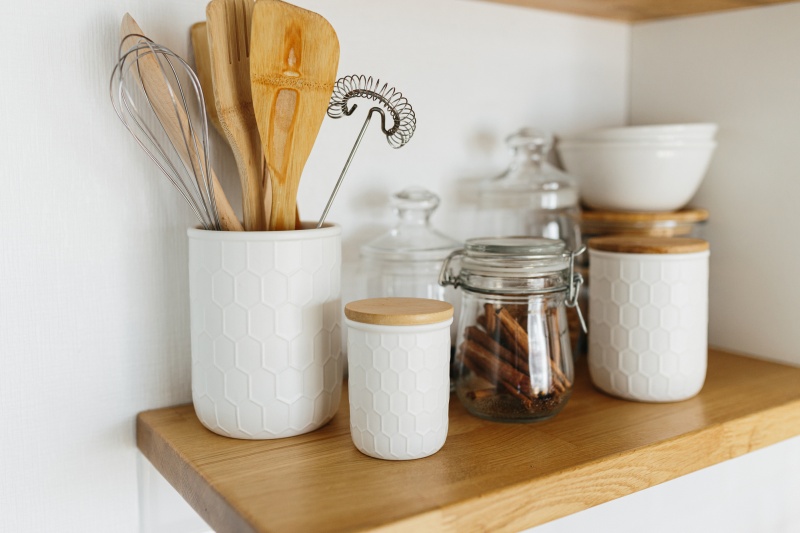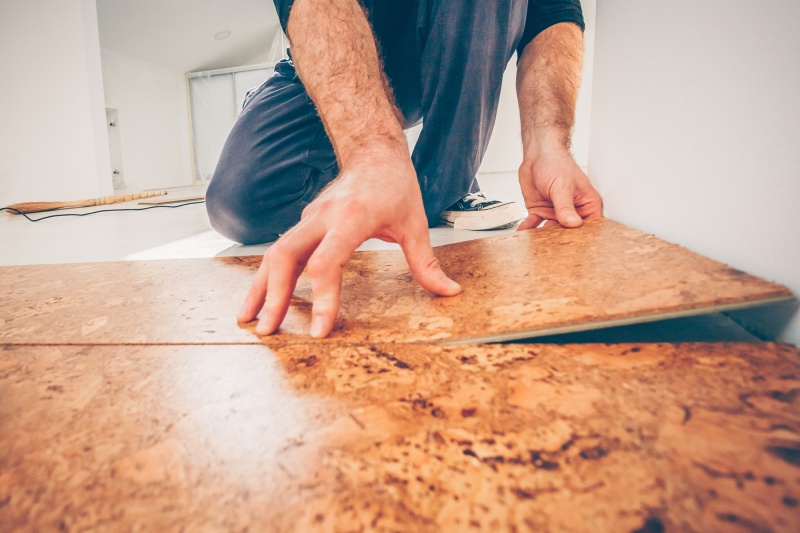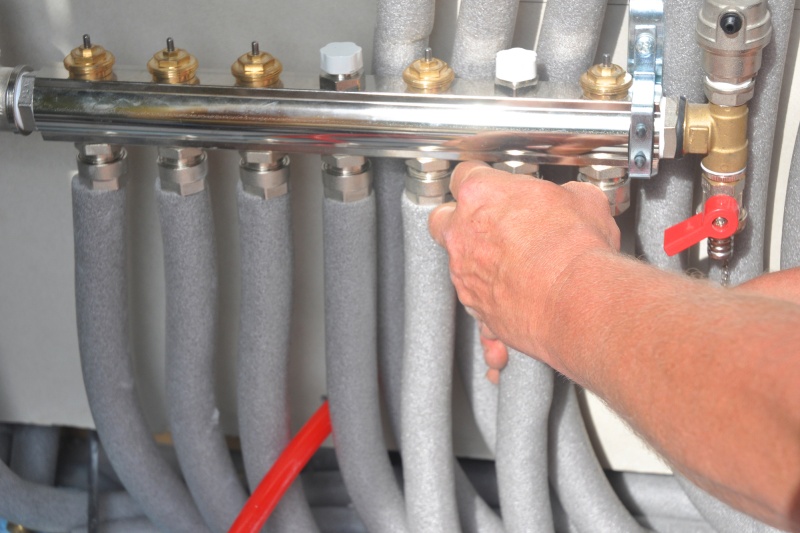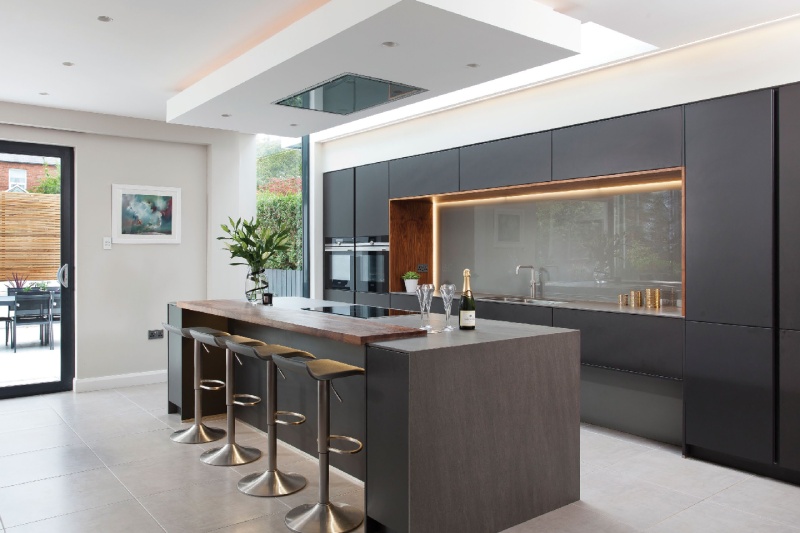13 Tips For Designing A Sustainable Kitchen

13 Tips For Designing A Sustainable Kitchen
Climate change has become an increasingly important issue for us all in recent years. Many homeowners are now looking for ways to make their homes more eco-friendly and sustainable kitchen design is one way to create an environmentally friendly space in your home that is both stylish and functional.
There are many ways to make your kitchen more sustainable, from the materials and construction methods used in the build to energy-efficient appliances and long-term sustainability considerations.
In this article, we explore some of the best tips for designing a sustainable kitchen, including the option of using our highly sustainable neolith sintered stone!
13 top tips for sustainable kitchen design
There’s no shortage of ways to help you create the perfect green space in your home, so here are 13 of our favourites!
1. Shop locally
One way to build a sustainable kitchen is to shop local for your materials, appliances, and furnishings.
Buying stone kitchen worktops from a local outlet, for instance, cuts down on the carbon emissions associated with transportation, and has the added benefit of supporting local businesses.
2. Reclaim and reuse
When possible, reclaim and reuse materials in your kitchen design. For example, you could use reclaimed or recycled stone for your kitchen worktops or reclaimed wood for your cabinets. Or how about installing a vintage salvaged sink?!
Reclaiming and reusing materials is a great way to reduce waste and cut down on manufacturing emissions while creating a unique, sustainable kitchen.
3. A sustainable kitchen is built using second-hand items
Another way to reduce waste and save money is to buy second-hand items for your kitchen.
You can find some great deals on gently used appliances, furniture, and décor at thrift stores, flea markets, and online marketplaces.
This cuts down on the resources used in manufacturing new products, saves you money and allows you to find materials and décor that are unique and full of character.
4. Use recycled content
Whenever possible, choose products made from recycled materials.
This includes things like recycled kitchen splashbacks, recycled metal cabinets, or even recycled paperboard flooring.
Recycling reduces the need for virgin materials and helps to keep waste out of landfills.
5. Utilise sustainable materials
When choosing materials for your sustainable kitchen, look for options that are environmentally friendly and sustainably sourced.
Bamboo is a great sustainable material that can be used for floors and cabinets. Cork is another sustainable option that is durable and stylish.

6. Employ eco-friendly flooring
Many types of flooring would be suitable for an eco-friendly kitchen, such as recycled glass tile or linoleum made from renewable materials.
Bamboo and cork, as mentioned already, are both great options, as they are durable and sustainable.
7. Either limit or decide not to use VOCs
Volatile organic compounds (VOCs) are chemicals that can off-gas from certain building materials, paint, and finishes.
VOCs can be harmful to your health, so it’s important to choose low or no VOC options for your sustainable kitchen.
Look for low or no VOC paint, adhesives, sealants, and flooring.
8. Use energy-efficient lighting and appliances
When choosing lighting and appliances for your sustainable kitchen, look for energy-efficient options. Energy-efficient appliances use less electricity and water, which is better for the environment and your wallet.
Compact fluorescent light bulbs (CFLs) use less energy than traditional incandescent bulbs and can last ten times longer.
9. A sustainable kitchen needs green tech
There are many types of green technology that can be used in the kitchen, from solar-powered appliances to induction cooktops. Induction cooktops are very efficient and use less energy than gas or electric cooktops.
Solar-powered appliances are a great way to reduce your carbon footprint, as they rely on renewable energy from the sun.
10. Plan for enhanced ventilation
Proper ventilation is important in any kitchen, but it’s especially important in an eco-friendly kitchen.
Cooking can produce a lot of fumes and VOCs, so it’s important to have a good ventilation system to remove them from the kitchen.
Exhaust fans that vent to the outside are the best option, but a range hood will also work.

11. Improve your insulation
Insulation is a key component of a sustainable kitchen.
Good insulation will help to keep your kitchen cool in the summer and warm in the winter, which can save you money on your energy bills.
It will also make your kitchen more comfortable to use year-round.
12. Use potted plants
There’s nothing like a bit of greenery to make a kitchen feel homier. Plants can also help to purify the air.
Indoor plants can help to remove VOCs and other contaminants from the air, making your kitchen a healthier place to spend time.
13. Buy plastic-free utensils and storage
Plastic is among the most widely used materials in the kitchen, but it’s also one of the most harmful to the environment, especially when it comes to single-use plastic items like straws, water bottles, and shopping bags.
If possible, avoid using plastic storage containers and opt for glass or stainless steel instead.

Neolith sintered stone – the perfect worktop for a sustainable kitchen
While all of these tips go a long way towards creating a sustainable kitchen, there is another step you can take to ensure the new centre of your family life is a truly eco-friendly space.
Neolith sintered stone is a lightweight kitchen worktop surface that combines superior strength with exquisite style. Combining style and functionality, it is a popular choice for design-savvy homeowners.
Neolith gets its strength and hardness from minerals such as clay, pure quartz and feldspar. It is exceptionally stable due to the minerals from silica and glass, and these natural elements are treated under extremely high pressure and temperature, which makes neolith virtually indestructible.
Neolith is a fantastic choice not only for its durability, hygiene and low maintenance, but it is also well suited for designing a sustainable kitchen due to its all-natural, eco-friendly properties.
Build a sustainable kitchen with help from The Stone Gallery
Building a sustainable kitchen can help take your home’s beauty and value to the next level.
More importantly, it’s eco-friendly, meaning you’re guaranteed to end up with a kitchen that not only suits your preferences but also doesn’t put a strain on the environment.
If you’re not sure where to start with your sustainable kitchen design, The Stone Gallery is here to help.
We have a wide range of unique, affordable, eco-friendly, and beautiful kitchen work products that are perfect for sustainable kitchens – especially our neolith sintered stone.
When you visit our showroom and see our extensive stone gallery, you’re sure to find the perfect stone for your new kitchen.
We have a team of expert professionals on-site to help turn your vision into a reality, so contact us today to get started on your sustainable kitchen journey.
